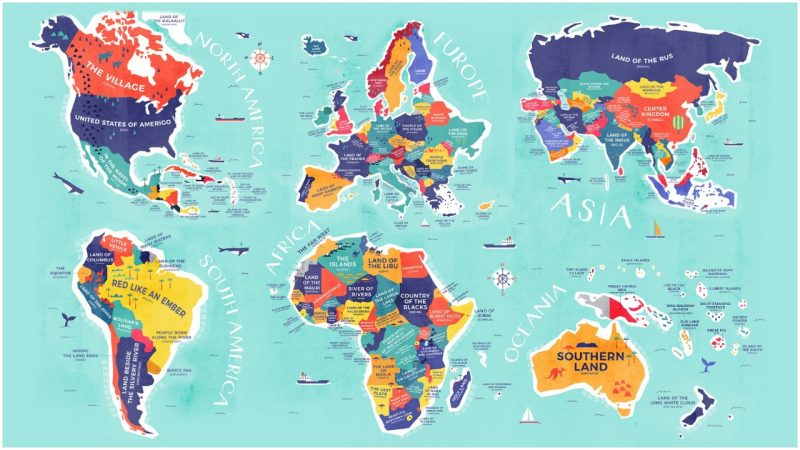The countries we come from, their names, are one of the most important ways we identify ourselves. But imagine if the current names of countries were replaced with versions conveying the literal meanings of the words.
In an attempt to have some fun with the name of each country we see on the globe, such a map has been produced by the Australian-based company Credit Card Compare. The map creators used various sources, like Oxford Dictionaries, to pin down an accurate translation of the meaning of the name. Credit Card Compare says that learning something about the roots of a place’s name “offers us fascinating insight into the origins of some of our favorite travel destinations.”
For example, on the map, surprisingly, Vatican City does not literally mean the Holy Land. If you’re looking for Holy Land, it is the translation for the name of the African island country of Madagascar. Another surprise: Mali is simply Hippopotamus.
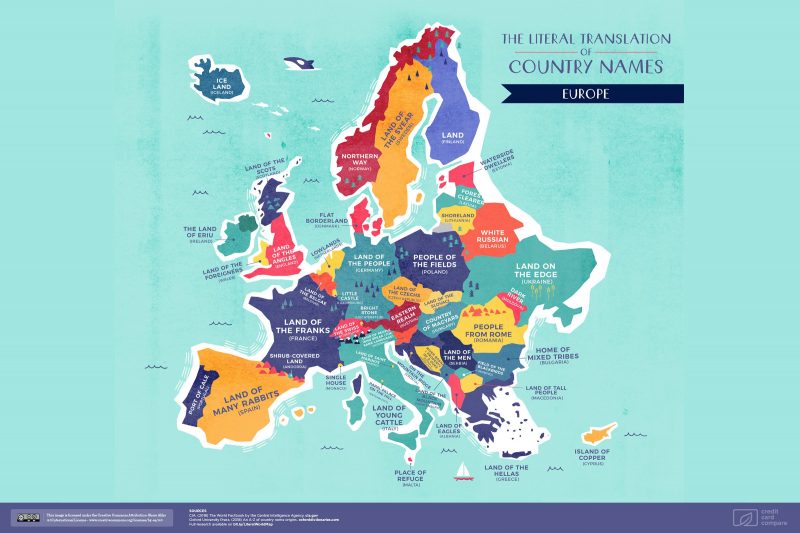
The map is a window into earlier eras of global development. Since ancient times, people have banded together in bigger and bigger groups out of need, but countries with rigid borders are a more recent invention. Since the first kingdoms and empires were established, borders have continually moved; different countries have been recognized and in some cases dissolved. The names of some countries have ancient roots that reflect the peoples who lived there and can be a reflection of how some groups desired to conquer the world.
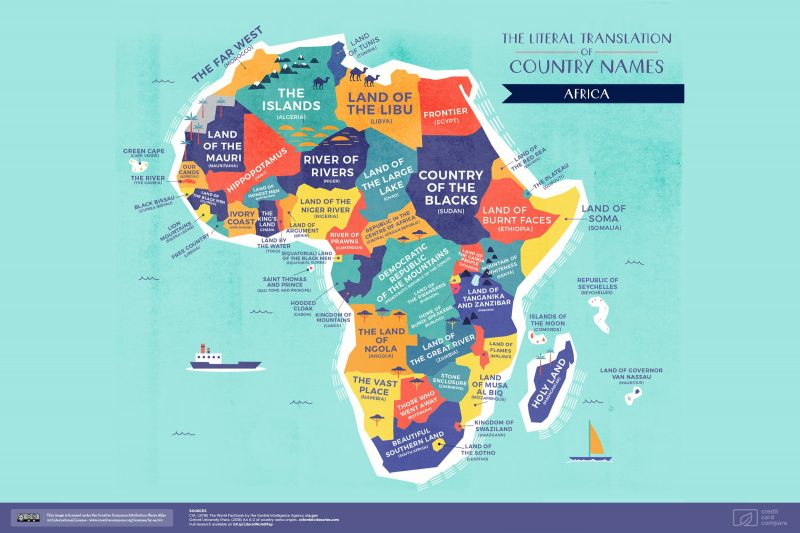
Japan, China, and surprisingly one of the smallest countries on our planet, San Marino, are often mentioned as the world’s oldest countries. Applying the researchers’ translation to the meaning of their names, the three oldest countries on this particular world atlas are the Land of the Rising Sun, Center Kingdom, and the Land of the Saint Marinus, respectively.
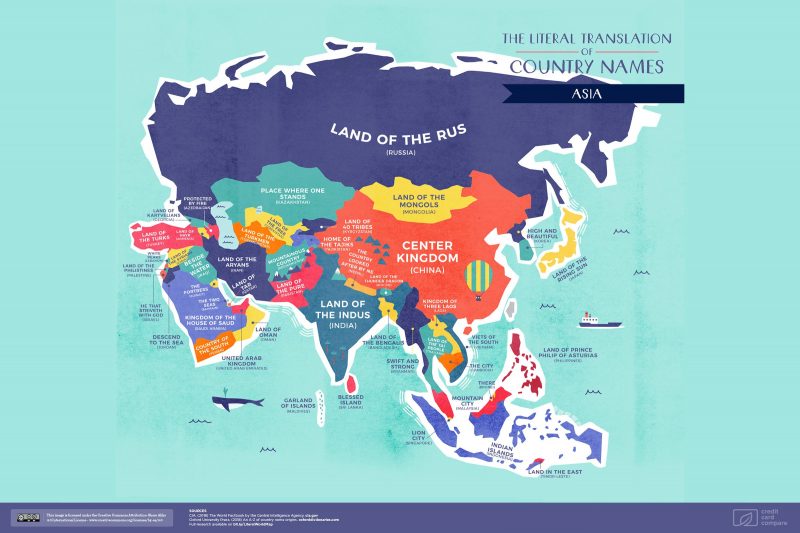
While San Marino’s name is obvious, taken from the country’s patron, in other cases the influence of various factors such as geography, wildlife, or climate can be seen. Thus India is Land of the Indus, and Spain is the Land of Many Rabbits. Brazil is evocatively named Red Like an Ember, and who wouldn’t want to see the idyllic tropical island nation of Nauru, with its white sands and coral reef, whose name is interpreted as I Go to the Beach.
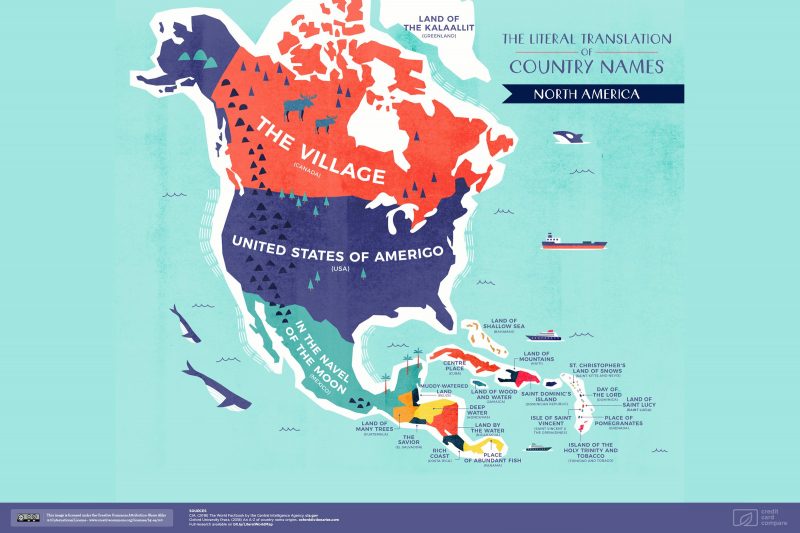
Some geographically-induced names, such as Morocco, here changed to Far West, or South Africa, aka the Beautiful Southern Land, hint of the boundaries and limited knowledge of the old world before the great discoveries. After the Americas were discovered by Westerners, the geographical consideration of where the Far West falls on the world map is certainly disputable if that is Morocco.
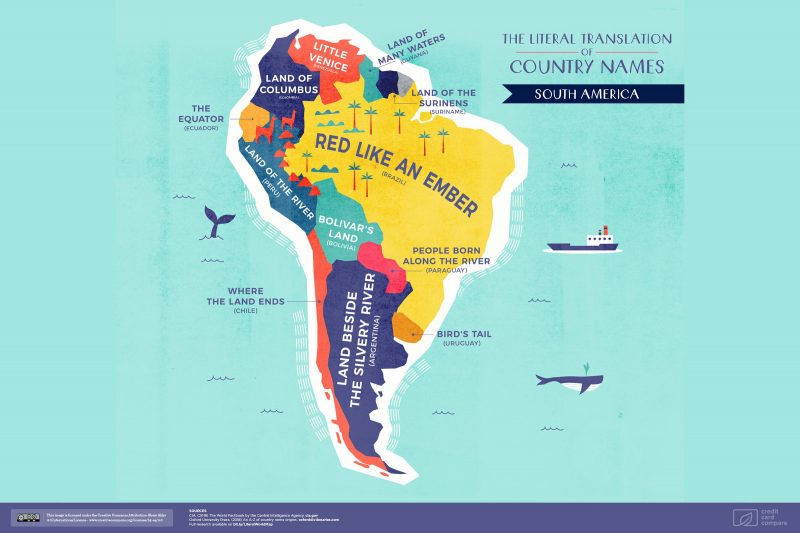
Other names of countries are admittedly poetic, such as Mexico, which on this map reads as In the Navel of the Moon. Poetic names are fewer, but there are plenty more that are connected to the people who are native to those lands like Macedonia, the Land of Tall People, or Romania, here dubbed People from Rome.
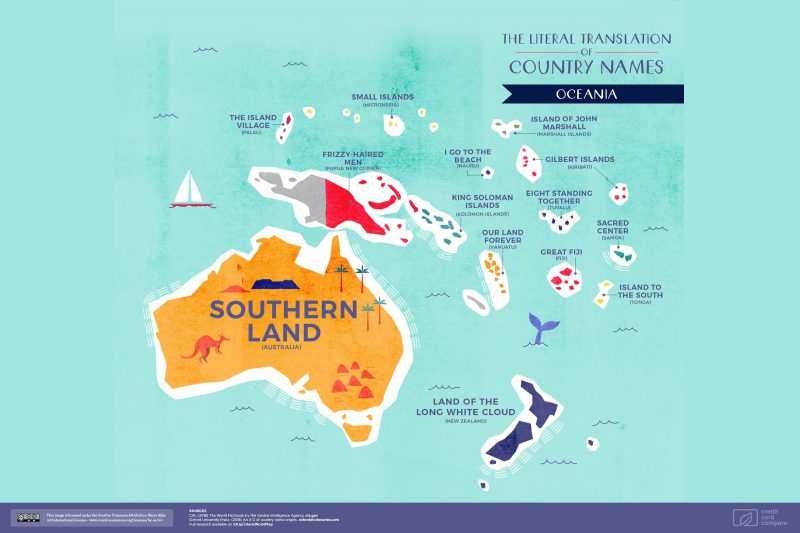
And while Canada, the second largest country in the world, is The Village and Papua New Guinea is apparently home to Frizzy-Haired Men, only the United States seems to remain almost the same. The United States of Amerigo is, according to this resource, named after Italian explorer and cartographer Amerigo Vespucci (1454-1512).
Some people might find some of the literal translations debatable, or feel that the version given on this map should read differently. Certainly, there are variations on how many country names should be interpreted. However, it is still great fun to take a look and see this transformed view of the world map.
